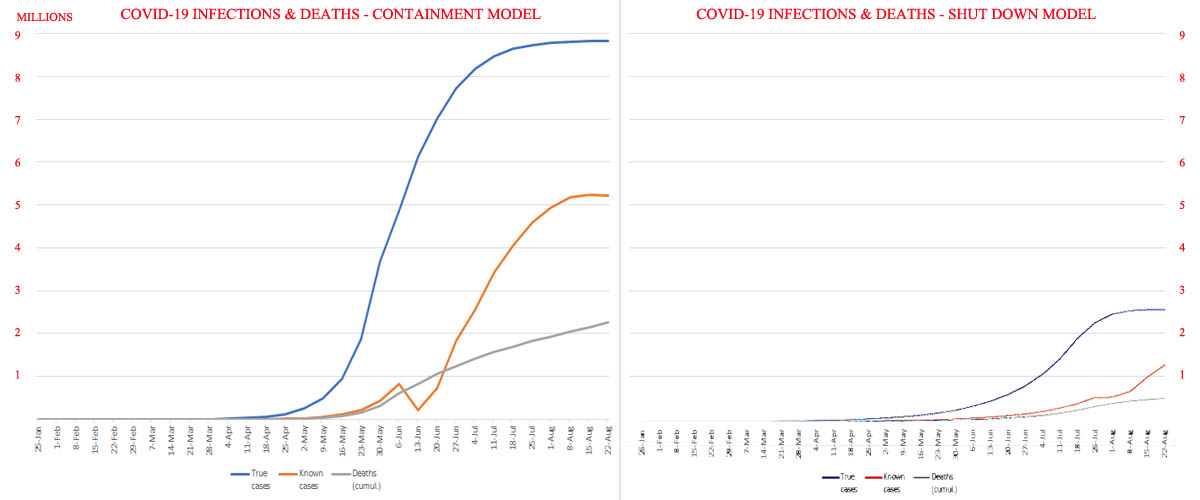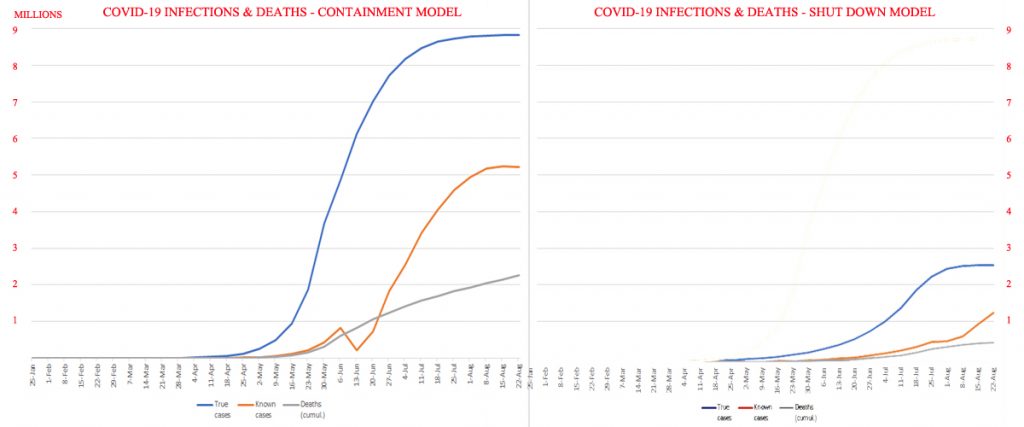
As the coronavirus pandemic plays out, some are questioning whether attempts to ‘flatten the curve’ come at a cost that is ultimately higher than the proclaimed crisis deserves … is the cure potentially worse than the disease?
Across the country mandatory containment measures to slow the spread of Covid-19 are setting in, first forcing closure of hospitality venues, soon followed by virtually all public spaces not deemed to be essential services.
Overnight strong industries have shuttered up shop, forcing unemployment on tens of thousands of Australians, halting or dooming to insolvency thousands of businesses, and leaving much of the population fearing desperately for their future.
An economic downturn far greater than the GFC is already inescapable. A Recession comes with two negative quarters of even fractional contraction. A Depression is defined as affecting more than one country, for a sustained period.
During the Great Depression of the 1930s, US economic output shrank around 33 per cent, with unemployment reaching 25 per cent. Already Britain reports around 30 per cent reduction in national productivity, with its containment measures having barely kicked in yet.
The Australian stock exchange has already recorded greater losses than the crash of 1987, with continued losses anticipated for some time.
Meanwhile, the Covid-19 tally in Australia (as at 30 March) stands at around 4,200 cases, with 18 fatalities.
In the context that influenza kills around 1500-3000 Australians each year, it is reasonable to ask: why all the panic over the coronavirus? And is fear of it worth the devastation to the economy?
To understand the problem, certain things must be clarified:
- This is a previously unknown pathogen, so no-one has any immunity
- Around 15% of people that contract the disease develop ARDS (Acute Respiratory Distress Syndrome). Of these people, many if not all will die without intensive medical assistance
- Around 20% of people develop little or no noticeable symptoms. They are still infectious while the disease is active, but may not realise they are infected
All viral outbreaks of this nature are classified by their pass-on rate – being the average number of people an infected person will further infect.
The numbers on Covid-19 are showing a pass-on rate of around 2.5-2.8. This may not sound like a lot, but unchecked the totals will exponentiate and take off. One person becomes three infected, becomes eight, becomes twenty, and so on.
At this point it almost appears the virus is under control in Australia, but at recent rates of social containment (previously ten, now limited to public gatherings of two) the AMA is still suggesting around 20 per cent of the population (5.2 million people) will end up getting the virus.
The real problem here is that this many people will equate to a number of patients needing ICU beds that is many, many times what is available – even given the desperate race to place more beds and respirators.
We are seeing the reality of a medical system being overwhelmed play out in Italy, where documented cases have reached 98,000, and the death rate has reached 11 per cent (10,779). Medical services are being forced to prioritise some patients over others (known as triage); currently people over 60 years of age are turned away, as there is no capacity for them.
Australia’s mortality rate is so far just 0.4 per cent, as all that need it are currently getting treatment in one of the roughly 500 ICU beds in the country.
However, if the current pass-on rate in Australia (calculated at ~2.5) continues, and one in five people in the country catch it, the cumulative death toll could still go into the hundreds of thousands.
The containment measures, ‘flattening the curve’, are aimed at reducing the pass-on rate. Once it falls below one, the number of active cases – including the asymptomatic spreaders – will fall as the virus goes through its course (currently thought to be 14-21 days).
The faster we can get the pass-on below one, the faster the virus can be contained and we can return to some semblance of normality.
The danger of compromising on containment measures, or reducing them too early, is that the asymptomatic spreaders will go on to infect more people, leading to ongoing outbreaks. It has reached the point where this is virtually inevitable in large, populous countries such as the USA.
Work on producing a vaccine is now top priority for many of medicine’s best and brightest, but the absolutely necessary checks and balances behind creating a safe, effective vaccine and widespread production, mean it is still at least 12 months away.
The other alternative to ratcheting down social interaction (the policy thus far) is the wholesale shut down of virtually the entire economy. This may seem extreme, but would in fact prove the lesser of evils in terms of overall damage to the economy.
We can act cautiously and meander into the kind of social annihilation that will come from millions of people dead, with outbreaks likely dragging on for years, or we can bite the bullet and accept that the severe short-term pain will more rapidly lead to a return to gains, with far greater loss of life and the associated disruption.
The below graphs are carefully calculated models of two scenarios. Each are the same up until now (end of March). The graph on the left assumes we continue the current approach, the other a complete economic shutdown, with a consequent fall in pass-on.
Note on graphs:
‘True Cases’ (below) includes infectious but asymptomatic people, while ‘Known Cases’ is a total of positive tests and diagnosed symptomatic people.
Editor’s note: the graphs on the left assume a continued transmission rate of 2.5, while the ‘Shut Down’ model on the right assumes the rate is steadily reduced to below 1. At this point neither outcome is assured. The aim here simply is to demonstrate the potential difference pandemic measures can make.

